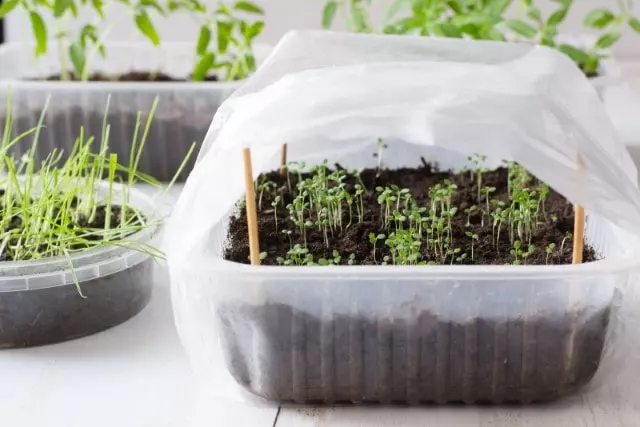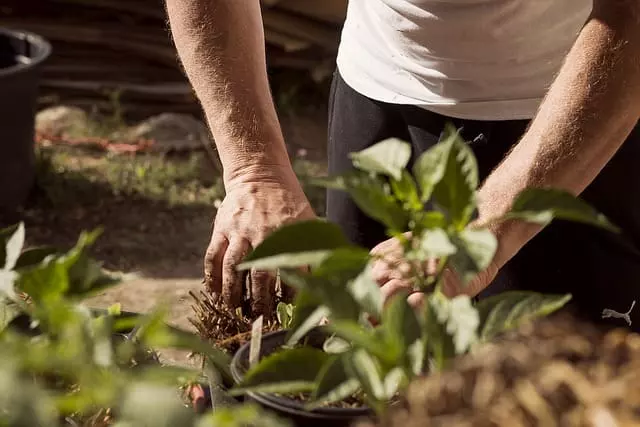In February, we keep alert for the care of our garden, because it is in this month when we will continue the work we did in the garden in January, with the care of the sowing that is already in progress and the cultivation of new plants that we want to plant to take advantage of the spring months.
If we did a good job in January, when there are still low temperatures, and we take care of the seedlings from the winter cold, then we can be sure that success will accompany us to achieve beautiful crops not only in our garden, terrace, or balcony but also in the garden because we can transplant those crops that reach this stage of the process.
Keep in mind that the weather conditions in February will be very different from one region to another. Many of the actions that we tell you here to perform during February when you are in cold climates will have to perform later (March or April). Continue reading to learn more about what to plant in February in this article.
Table of Contents
February Is a Month of a Lot of Activity in The Garden
Having a vegetable garden is a great responsibility. It is a serious activity that requires constant attention from us. The food we receive from the garden gives us double satisfaction since it is being grown by ourselves. This month is a month of great contrast, the cold of January continues with night frosts, and some of them are accompanied by winds and rains, but it also offers us sunny and warm days.
There is always work to be done. In this article, we offer you a simple guideline for tending your garden in February:
What To Do in The Garden in February?
The first action is to review the planning we did in January to remember how we programmed the planting. We can help ourselves with the notes we have made of all the gardening activities. This will allow us to clarify any doubts that may arise so that we can obtain a good development of the crops in the end.
Preparation Of the Seedbeds – Plant in February
Then give priority attention to the seedlings to be planted in the soil. Remember that in January it is recommended to sow cold-sensitive vegetables, but with due protection, so that in February they can be transplanted in the garden, as is the case of celery, zucchini, melon, and cucumber. By this time, the conditions are already in place for these vegetables to continue their cycle already planted directly in the ground.
In addition to these vegetables, we have already started the seedlings of onion, endive, lettuce, and leek, which are resistant to cold and are perfectly suited to be transferred to the soil.
Each of the plants has specific characteristics for its cultivation with the idea of achieving good development. Our vegetable garden begins to have plants once we transfer those that had a good development in the seedbeds.
Transplanting The Seedlings – Plant in February
As a second activity, there are the plants that we sow like tomatoes and peppers that although we know that they need heat to develop, the sowing was also done in the greenhouse with their respective protection from the cold, then if they already have approximately 6″ (15 cm) of growth, they are ready to be transplanted to the soil (in cold climates we recommend you to do it from March – April).
Some vegetables grow best in direct sun and others in places where there is some shade, this is combined with excellent soil rich in organic nutrients. Tomato is a plant that can be grown in all types of gardens. Like peppers, it needs soil made up of compost or leaf mulch so that it can retain moisture, rich in nutrients, and very importantly, avoid the appearance of weeds.
What to Plant in February
The third activity would be to sow new plants of fruits and vegetables typical of this month since the days are longer, and we can count on more hours of sunlight, providing rapid growth. On the other hand, it may happen that in this still cold season, there is an unexpected frost that takes us by surprise, so we must take precautions.
February is a month when we see variety in terms of new planting, this is given by those plants that can be grown outdoors, new seedlings, and seedlings that are kept indoors.
- Outdoor sowing: Radish, garlic, beet.
- Sowing in seedbeds: Beans, lettuce, chard, arugula.
- Sowing in indoor seedbed: Tomato, bell pepper, eggplant, zucchini in case we have not done it in January. In February there are still low temperatures.
If you did not manage to plant peas at the end of the year or in January, then February is a great month to plant peas because they will germinate more easily since the coldest nights of the season have passed, and you will see the results in late spring. Now, if you planted peas at the end of the year, the results will be seen this month with the germination of some plants. They may not all germinate, so more seeds will need to be obtained to replenish those that did not germinate.
This month offers the opportunity to sow vegetables that will see their harvest in late spring, so it is time to work in the garden:
- Green Beans
- Celery
- Leeks
- Artichokes
- Broccoli
- Zucchini
- Sunflowers
- Pumpkins
- Strawberries
- Radishes
- Carrots

Garden Care in February
February is a good time to prepare the beds that are free with the help of a motor hoe or electric tiller.
Due to the low temperatures that still exist in February, it is good to select vegetables that are ideal for this time of the year, avoiding the worry of frost. These vegetables are resistant, and you can obtain great benefits from their cultivation if you take advantage of these cool days.
Some of these vegetables that we can grow in February are Leeks, Garlic, Onions, Peas, Broad beans, Carrots, Lettuce of all kinds, and Radishes.
Temperatures in February vary a lot, and an effective strategy should be planned to cope with these changes. The preparation of greenhouses is essential to ensure our crops. Natural mulching, keeping pots indoors, and covering pots with bubble wrap or thermal blankets are some alternatives to alleviate the climatic problem.
The shelter of the transplants of those plants we sow in January is essential. These small seedlings are very delicate, and we must make sure that the cold does not affect them and that the sowing is lost. For lettuce or onion seedlings that are going to be transplanted in the soil, it is necessary to take the precaution of mulching the soil with compost as dark as possible to keep the soil warm.
In the case of tomatoes, being a delicate crop, it is preferable to transplant them into an intermediate pot if the plants are large. This way they can be kept longer in the greenhouse so as not to expose them to low temperatures. This can be done with other crops that are susceptible to cold.
Seedling crops can be grown without any problem in a heated greenhouse. By March, transplanting can be done and harvesting is achieved earlier. This allows us to sow again in April and summer will be extended and the eggplant, zucchini, tomato, and bell pepper crops can be enjoyed longer.
Maintenance Of Fruit Trees in February
Fruit trees adorn our orchards when they are in full bloom, they offer us the pleasure of consuming their fruit, either fleshy or dry, to complement the nutrition of the organism. When we have planted this type of tree, we must turn our attention to their care.
Already for February, fruit trees require a lot of care:
- If we want healthy and tasty fruits, we must have a schedule to fertilize with an organic fertilizer such as well-cured manure or compost. Although it is fertilized at the time of planting, this process should be done during the life of the tree since common soil is not sufficient for its nutrition.
- It is advisable to add mulching in a way that keeps the soil moist.
- Develop a safe practice to avoid the invasion of disease-causing pests, since fruit trees are prone to these attacks.
- Pruning of large trees is usually done in fall, summer, or late winter. Never in late fall or early winter.
Nature is already making its call to cultivate so that through the activity of birds and insects, we can observe the miracle of life when the first seasonal products are received. Learn more about when to prune fruit trees – the correct way.

